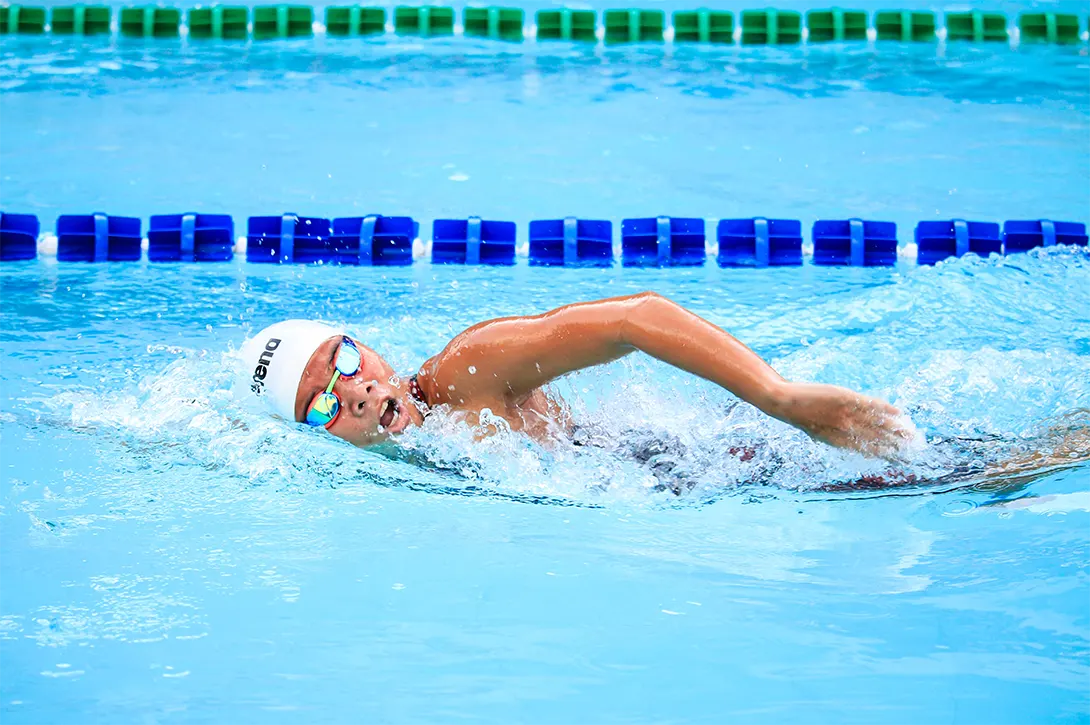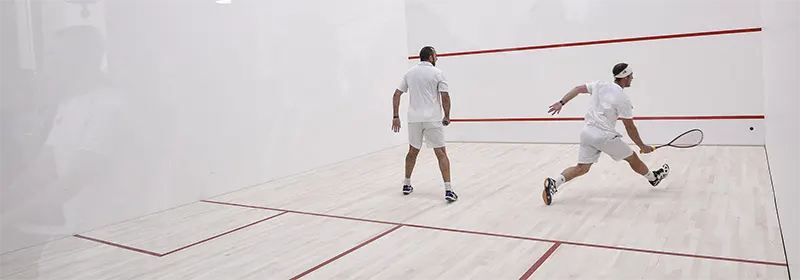31 May 2022 / 3-Min Read / Translate
Having good technique when swimming is just as important as having good swing technique when playing squash. In fact, it might be more important due to the potential for injury. I’ve seen some terrible strokes that look like they do more harm to the person than good! So make sure you stroke technique is not terrible.

Swimming can be both relaxing and hard work.
Squash players can suffer from back, hip and knee issues because, and let’s be honest, squash is a very physically demanding sport. Some courts do not have a sprung floor, this means that moving around a court for 45 minutes puts a lot of pressure on your body, especially if you are not a good mover.
To compensate for this pounding, exercising in water allows the body to recover, but also allows you to exercise your cardio system and your muscles, while giving your bones a rest.
Often people ask questions like, “How often should I swim?” and “What type of swimming should I do?” and the answer is more or less the same for everybody. Anything less than once per week is more useful for the mind than the body.

If you swim less than once per week, you body will not become accustomed to the exercise and it won’t really benefit you. This is of course assuming that you are playing squash at least once per week and some other training too. Perhaps make swimming a regular session the day before your weekly match or club night. That way, you do some exercise without straining yourself too much. I probably won’t recommend more than twice a week either, simply because the time might be better spent on court doing solo or pair drills.
Swimming should be seen a supplementary to your core squash training. Use it to give your body a rest from gravity. The next question is what type of swimming. Well, the first part of the answer is a variety of strokes. Ignoring the butterfly, which most people can’t do, if you can do the other three strokes: front crawl, backstroke and breast stroke, do them. All three work the arms, shoulders, back and chest, but the breast stroke is great for hip strength and mobility.
You can mix some long swims with shorter more intense laps in the same way you would with running or ghosting. If you really want to step up to the next level, you could do one or two pool lengths, follow by a 20 second rest, do that 5 to 10 times, then take a longer rest and do the whole set again. But that’s only after you have been swimming for a few months.
Some people like to swim as a cool down after playing squash and that’s a great thing to do, just remember that this type of swimming is NOT training, so take it easy and slow. You are trying to cool down in a controlled manner, not improve your fitness.
Some people complain of boredom when swimming and running, and I do understand that point of view, but focusing on having good technique and having a plan before getting into the pool can make all the difference.
Swimming is great for working your cardio system and muscles, while giving your joints a rest. Add a weekly pool session to your training plan.